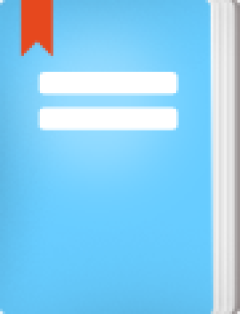Ditapis dengan

Improving the teaching and learning of programming languages: an approach for…
This paper posits an approach for the design of programming language courses. The approach consists of 7 steps. Step 1 was thought to help learners to rectify their negative beliefs in order to cope with the learners' emotional aspect. Step 2 proposes the intersection among the learners' knowledge and abilities background in order to help the learners to construct their own knowledge based on t…
- Edisi
- (Vol. 36, Issue 2)
- ISBN/ISSN
- 0092-1815
- Deskripsi Fisik
- 235-247 hlm; 13lembar; tabel
- Judul Seri
- -
- No. Panggil
- 005.13 GAB i

Language Teaching: A Brief Case Study of Indian Education System. E-JURNAL
Students studying in India or following Indian Education curriculum are introduced to three languages but majority of them are not balanced bilinguals/multilinguals. The existing Indian teaching system is practised only in three languages (English, Hindi with one language of their choice) both at national and international levels. India is a multicultural country (bears both the language and cu…
- Edisi
- Vol. 20, Issue 9
- ISBN/ISSN
- 1930-2940
- Deskripsi Fisik
- -
- Judul Seri
- -
- No. Panggil
- -

النبأ يف القَصَص القرآني.
- Edisi
- Vol. 53 Issue 3
- ISBN/ISSN
- 1813-4521
- Deskripsi Fisik
- -
- Judul Seri
- -
- No. Panggil
- -
- Edisi
- Vol. 53 Issue 3
- ISBN/ISSN
- 1813-4521
- Deskripsi Fisik
- -
- Judul Seri
- -
- No. Panggil
- -

The challenges of teaching with technology: from computer idiocy to computer …
Teacher education programs often focus on how to use technology rather than on how to teach with technology. Further, teachers with more exposure to technology do not always use technology tools to help their students learn. This study investigated an educational technology course that provided hands-on activities in a collaborative, non-threatening environment to determine if it would improve …
- Edisi
- Vol. 35, Issue 2
- ISBN/ISSN
- 0092-1815
- Deskripsi Fisik
- 157 - 168hlm; 10 Lembar; Tabel
- Judul Seri
- -
- No. Panggil
- -

Teachers' and Students' Perspectives on Good Teaching Using Technology in Ele…
This article describes good teaching with technology from both teachers' and students' perspectives through analyzing two distinctive cases of teaching practices with technology in K-12 settings. Data was generated from teacher interviews, classroom observation, student interviews, and student reflection journals. From the analysis of these data, the authors identified four categories of behavi…
- Edisi
- Vol. 15, Issue 3
- ISBN/ISSN
- 1550-1876
- Deskripsi Fisik
- 14 Lembar; Tabel
- Judul Seri
- -
- No. Panggil
- -

Zayed University Community: The Role of the Library in Developing Information…
The age of the information and knowledge competences forces us to change the traditional teaching methods used in the past. Thus, we find that scientific research has become the most important of lifelong learning in the process of teaching at the university colleges. The importance of this study is demonstrated by the need to determine the extent to which Zayed University community benefit fro…
- Edisi
- Issue 58
- ISBN/ISSN
- 1687-2215
- Deskripsi Fisik
- -
- Judul Seri
- -
- No. Panggil
- -

QUANTUM TEACHING
- Edisi
- -
- ISBN/ISSN
- -
- Deskripsi Fisik
- -
- Judul Seri
- -
- No. Panggil
- 370.102
- Edisi
- -
- ISBN/ISSN
- -
- Deskripsi Fisik
- -
- Judul Seri
- -
- No. Panggil
- 370.102

STUDENTS' PERCEPTION ON THE USE OF CODE SWITCHING IN TEACHING ENGLISH AT TENT…
- Edisi
- -
- ISBN/ISSN
- -
- Deskripsi Fisik
- -
- Judul Seri
- -
- No. Panggil
- 371.1 DEN s
- Edisi
- -
- ISBN/ISSN
- -
- Deskripsi Fisik
- -
- Judul Seri
- -
- No. Panggil
- 371.1 DEN s

PENGARUH PENDEKATAN CULTURAL RESPONSIVE TEACHING TERHADAP HASIL BELAJAR DI SM…
- Edisi
- -
- ISBN/ISSN
- -
- Deskripsi Fisik
- -
- Judul Seri
- -
- No. Panggil
- 371.1 MAS p
- Edisi
- -
- ISBN/ISSN
- -
- Deskripsi Fisik
- -
- Judul Seri
- -
- No. Panggil
- 371.1 MAS p

TEACHERS PROBLEMS IN TEACHING READING COMPREHENSION AT SMP YWKA PALEMBANG
- Edisi
- -
- ISBN/ISSN
- -
- Deskripsi Fisik
- -
- Judul Seri
- -
- No. Panggil
- 371.102 RIZ t
- Edisi
- -
- ISBN/ISSN
- -
- Deskripsi Fisik
- -
- Judul Seri
- -
- No. Panggil
- 371.102 RIZ t
 Karya Umum
Karya Umum  Filsafat
Filsafat  Agama
Agama  Ilmu-ilmu Sosial
Ilmu-ilmu Sosial  Bahasa
Bahasa  Ilmu-ilmu Murni
Ilmu-ilmu Murni  Ilmu-ilmu Terapan
Ilmu-ilmu Terapan  Kesenian, Hiburan, dan Olahraga
Kesenian, Hiburan, dan Olahraga  Kesusastraan
Kesusastraan  Geografi dan Sejarah
Geografi dan Sejarah